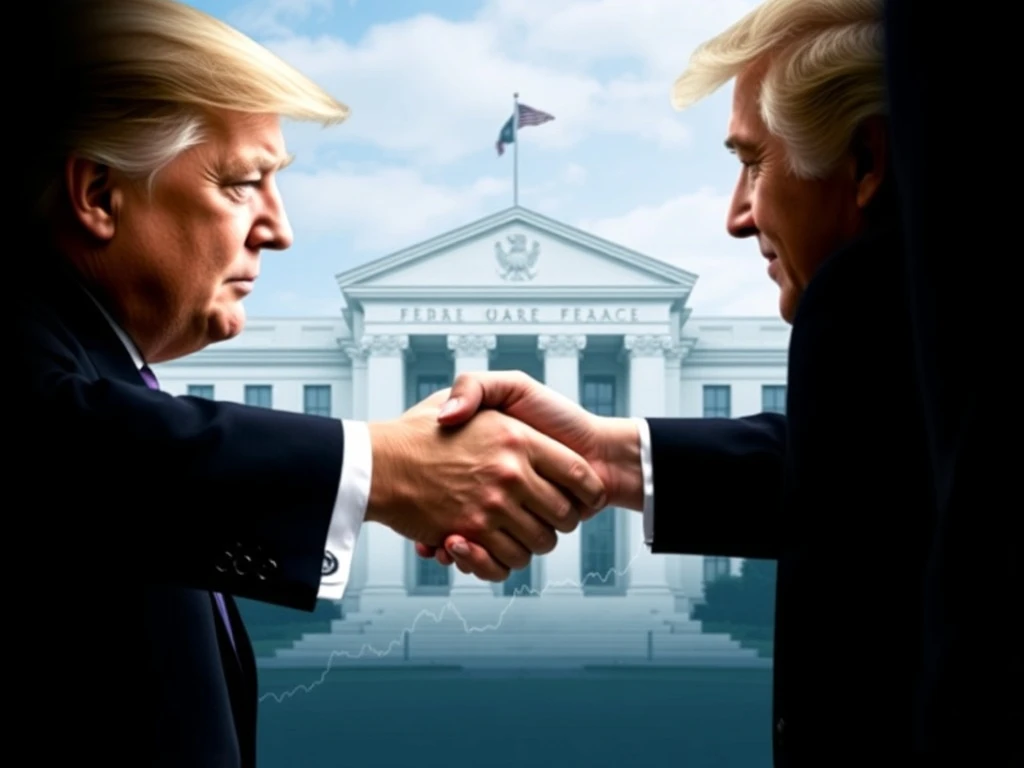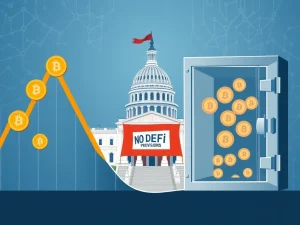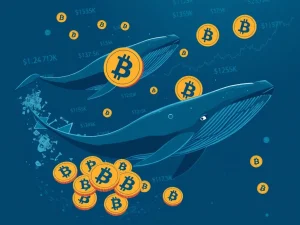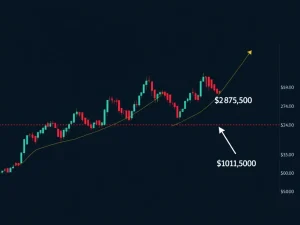Trump’s Pivotal Shift: Upholding Fed Independence for Crucial Market Stability

In the often-turbulent world where politics meets economics, every major decision by a global leader sends ripples, not just through traditional markets but also into the dynamic realm of cryptocurrencies. Recently, former President Donald Trump made a significant announcement regarding Federal Reserve Chair Jerome Powell, signaling a pragmatic retreat from earlier confrontational stances. This pivotal decision, centered on prioritizing market stability and respecting the institution’s independence, has profound implications for the broader financial landscape, including how investors perceive risk and stability in digital assets. Let’s delve into why this development is more than just political theater.
The Trump Powell Standoff: A Strategic Retreat
For years, the relationship between Donald Trump and Jerome Powell has been characterized by public friction, particularly concerning the Federal Reserve’s interest rate policies. Trump frequently expressed frustration, advocating for lower rates to stimulate economic growth, often clashing with the Fed’s mandate to control inflation and maximize employment. Remember the public criticism, even over the Fed’s headquarters renovation project? It seemed a direct confrontation was always on the horizon.
However, in a late July 2025 discussion, President Trump indicated a clear shift. While acknowledging that terminating Powell’s position would be a ‘big deal,’ he stated such an action was ‘not necessary.’ Describing his recent conversation with Powell as ‘productive’ and the atmosphere ‘not tense,’ this marks a significant departure from previous rhetoric. This isn’t just a change of heart; it’s a strategic recalibration, balancing political pressure with practical economic considerations. It signals an understanding that while political influence can be exerted through rhetoric, direct intervention carries substantial risks.
Why Federal Reserve Independence Matters
The independence of the Federal Reserve is a cornerstone of U.S. monetary policy, designed to insulate critical economic decisions from short-term political pressures. This autonomy allows the central bank to make tough, sometimes unpopular, choices regarding interest rates and money supply, focusing on long-term economic health rather than electoral cycles.
Legal experts have consistently highlighted the robust statutory protections safeguarding the Fed Chair’s position. Removing a Fed Chair without clear justification could trigger protracted legal challenges, potentially undermining public trust in the institution. The mere threat of such action can introduce immense uncertainty into financial markets, affecting everything from bond yields to cryptocurrency valuations. Trump’s acknowledgment of these legal and market risks underscores a pragmatic approach over a purely ideological one. This decision reinforces the idea that, despite political rhetoric, the institutional framework supporting the Fed’s autonomy remains a critical pillar of economic governance.
Navigating Market Stability Amidst Political Tensions
The financial markets thrive on predictability and stability. Any hint of political interference in an independent institution like the Federal Reserve can send shockwaves, leading to increased volatility and investor apprehension. When a president publicly threatens to fire the Fed Chair, investors immediately begin to price in a ‘political risk premium,’ which can manifest as higher borrowing costs, a weaker dollar, or even a flight to perceived safe-haven assets, including certain cryptocurrencies.
Trump’s decision to back off from firing Powell directly aligns with broader economic priorities focused on maintaining stability. While he consistently advocates for lower interest rates to stimulate growth, the method of achieving that influence has shifted. Instead of direct action, he appears to leverage public criticism and dialogue, a strategy mirroring past approaches where rhetorical pressure was used without outright intervention. Analysts note that even this rhetoric introduces market uncertainty, with investors scrutinizing the Fed’s policy decisions for signs of political influence. For crypto investors, understanding these macro shifts is vital, as global economic stability directly impacts digital asset sentiment and adoption.
The Future of Monetary Policy and Executive Influence
This episode reignites crucial debates about the Fed’s role in an increasingly polarized political climate. The central bank’s dual mandate to control inflation and maximize employment is legally protected, and its credibility hinges on its ability to resist external pressures. While presidents retain appointment powers over the Fed Chair and governors, the institution’s operational independence is paramount for effective monetary policy.
Trump’s public stance, framing his decision as one of necessity rather than principle, avoids escalating a conflict that could undermine both his agenda and the Fed’s institutional authority. This pragmatic approach suggests a recognition of the delicate balance between executive authority and economic governance. However, the ongoing tensions mean that the Fed’s independence will remain under renewed scrutiny, shaping how future administrations interact with this vital institution. For crypto enthusiasts, these dynamics are essential; a stable and predictable macroeconomic environment, influenced by central bank policies, often provides a more conducive backdrop for the growth and mainstream adoption of digital currencies.
The recent development concerning Donald Trump and Jerome Powell marks a significant moment in the ongoing dialogue between political leadership and economic governance. By stepping back from a direct confrontation, Trump has seemingly prioritized financial market stability and acknowledged the institutional independence of the Federal Reserve. This strategic recalibration, while not eliminating future tensions, offers a degree of reassurance to investors and highlights the complex interplay between rhetoric, policy, and market reactions. As the world continues to navigate economic uncertainties, the autonomy of institutions like the Fed remains a critical anchor, influencing not just traditional finance but also the burgeoning crypto economy.
Frequently Asked Questions (FAQs)
Q1: Why did Donald Trump consider firing Jerome Powell in the first place?
Donald Trump frequently expressed frustration with Jerome Powell and the Federal Reserve’s interest rate policies, believing they were too high and hindering economic growth. He often publicly criticized Powell, advocating for lower rates to stimulate the economy, leading to speculation about his desire to remove the Fed Chair.
Q2: What are the legal implications of a President firing a Federal Reserve Chair?
The Federal Reserve Chair is appointed for a four-year term and can only be removed for cause, not simply due to policy disagreements. Legal experts suggest that firing a Fed Chair without clear justification could lead to protracted legal challenges, potentially undermining the institution’s independence and creating significant market instability.
Q3: How does the Federal Reserve’s independence impact financial markets?
The Federal Reserve’s independence is crucial for market stability because it allows the central bank to make monetary policy decisions (like setting interest rates) based on economic data and long-term goals, free from short-term political pressures. This predictability helps maintain investor confidence, reduces volatility, and ensures consistent economic policy.
Q4: What is the ‘dual mandate’ of the Federal Reserve?
The Federal Reserve operates under a ‘dual mandate’ set by Congress: to achieve maximum employment and maintain price stability (control inflation). These two goals guide the Fed’s monetary policy decisions, such as adjusting interest rates and managing the money supply.
Q5: How does this decision impact the broader conversation about executive authority and economic governance?
Trump’s decision highlights the ongoing tension between a president’s desire to influence economic policy and the institutional independence of bodies like the Federal Reserve. It reinforces the idea that while rhetorical pressure can be applied, direct intervention carries significant legal and economic risks, underscoring the importance of checks and balances in economic governance.









